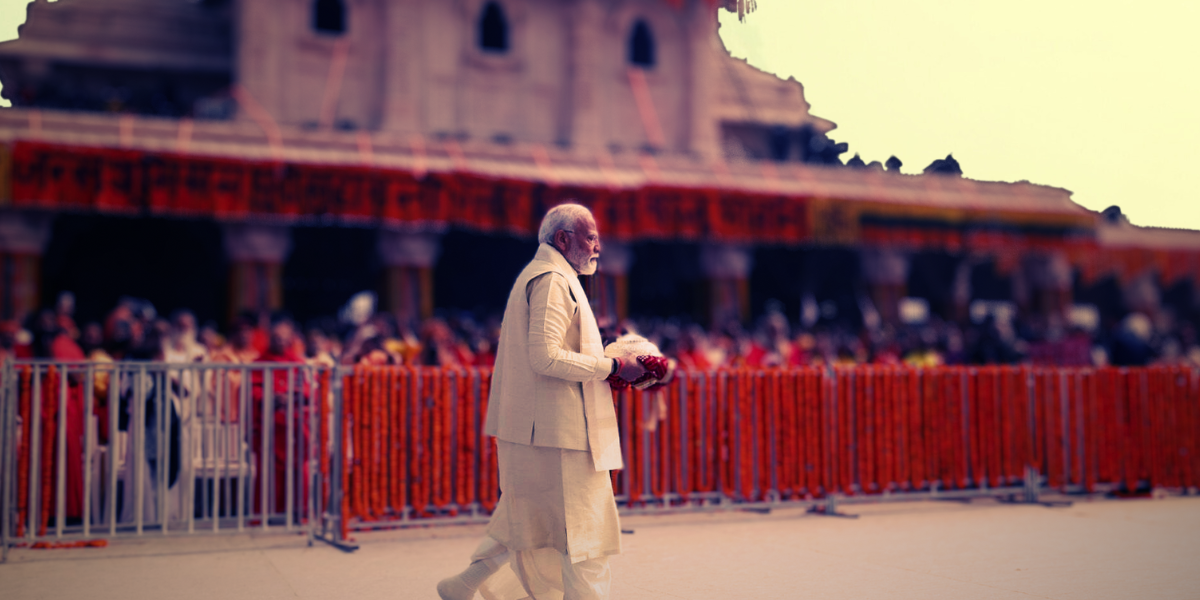Twilight Prisoners: The Rise of the Hindu Right and the Fall of India by Siddhartha Deb is a profound exploration of the perilous ascent of Hindu nationalism in India and its implications for the nation’s social fabric, political landscape, and economic trajectory.
Through a meticulous examination of historical events, personal narratives, and critical analysis, Deb unveils a stark portrayal of the impact of Hindu nationalism under the leadership of Prime Minister Narendra Modi. As Deb navigates through the complexities of modern India, he sheds light on the challenges faced by marginalized communities, the erosion of secular values, and the unsettling rise of authoritarianism in a country once celebrated for its diversity and pluralism.
I write this review under the pen name “Abbhi Azadi Nahin,” which translates to “No freedom until now.” As an Indian Muslim living in the diaspora, this book hits a little too close to home. When Modi became Prime Minister, many of the 200 million Muslims in India knew that it signalled a strengthening of underlying Hindu nationalist sentiments.
Hindu nationalism as a weapon
The book explores how the orange colour, one of the tricolours of the Indian flag, a symbol of Hindu nationalism, has become a weapon. I remember running around school humming the national anthem, carrying the flag with pride. The Indian constitution highlights five pillars, one of which is secularism. Thinking about this now makes me laugh, as I don’t think we ever arrived at the station named secularism.
The book begins with Deb looking for a city named Allahabad, which seems to have disappeared from the face of the earth. He soon realizes that the name was changed to “Prayagraj,” a name that aims to erase any association it had with the Mughal Empire. This one example illustrates the seemingly small benign changes taking place in India to erase symbols of Muslim culture. Deb also situates the decline of the Left in India within an international context, which saw left parties and class struggle in retreat at the start of the 21st century.
The first section of the book focuses on Modi’s brand, and how it ties into every Indian dream of “DIY upward mobility.” Modi’s long standing ties with Rashtriya Swayamsevak Sangh (RSS), a paramilitary Hindu nationalist organization, were key to his rise to power. The RSS has had a long history of violent Hindu nationalism. Deb describes Modi’s initial base of support around the RSS as “unmoored nihilism that dresses itself in religious colors and acts through violence, that is ruthlessly authoritarian in the face of diversity and dissent, and that imprints the brute force of its majoritarianism wherever it is in power.”
This base would play a role in intimidating critics of Modi in his bid for power. Modi and his far-right base played a deadly role in the Gujarat riots. Modi, then Chief Minister of Gujarat, gave the green light to Hindu nationalists to carry out anti-Muslim violence, resulting in over 1000 deaths. While later clear of any wrongdoing, Modi took care to suppress evidence of his culpability. With the Gujarat attacks in 2002 following shortly after the 9/11 attacks in the US, it seems like the West and India had a common enemy – Muslims.
New pathways for citizenship exclude Muslims
By December 2019, the Bharatiya Janata Party (BJP) had enacted a nationwide law known as the Citizenship Amendment Act (CAA). This legislation provides a pathway to Indian citizenship for Hindu, Christian, Jain, Buddhist, Sikh, and Parsi migrants who fled to India from Afghanistan, Pakistan, and Bangladesh before December 31, 2014, due to religious persecution.
The CAA is designed to expedite the naturalization process for these individuals, potentially allowing Bengali Hindus, who were not included in the National Register of Citizens (NRC), to also seek citizenship. The act pointedly excludes Muslims, the only major religious group in the region not covered by the CAA, raising concerns about its discriminatory nature and the implications for India’s secular constitution. The law has been met with widespread protests and legal challenges, with critics and human rights organizations arguing that it undermines the country’s secular foundation and discriminates against Muslims, who constitute a significant minority in India.
Perhaps one of the most potent symbols of the communal tension between Muslims and Hindus in India is the Ram Mandir temple in Ayodhya. The temple is being constructed on the site of a former Mosque that was destroyed by a mob of Hindu nationalists in 1992.
Deb interviews a construction worker involved in building the temple there who was part of the mob that destroyed the old mosque. Deb notes how there is no remorse or guilt by Hindu nationalists. Rather, the destruction of places of worship by Hindu nationalists seems to be following a well worn playbook.
As Deb describes, Hindu nationalists “install an idol inside a mosque in the town of Mathura because it supposedly occupies the birthplace of Krishna, another avatar of Vishnu. There is even talk that the Taj Mahal is really an ancient Shiva temple appropriated by Muslims that must be returned to its former glory.”
Hindu nationalism used to justify neoliberal reforms
Modi is lauded by his supporters for his supposed role in unleashing growth in the Indian economy. This argument is used by the Indian right to defend not only Modi but the wider project of Hindu nationalism.
But who is benefitting from this growth? What is its cost? As Deb argues “the market was not a gateway to greater equality and democracy in India but a hall of mirrors distracting us from cruelties new and old pulsating through the land.” Some of Modi’s strongest supporters became his strongest critics after 2019 when the dysfunction of Modi’s market reforms and the violence of Hindu nationalist thugs’s violence became apparent.
India’s economic growth under Modi is driven by neoliberal policies and tactics originating in Western nations. In order to present these policies as uniquely their own, the Hindu Right tries to tie them to its Vedic past by fabricating books that try to bring together the Vedic teachings and the technological advancements in the present as seen in the Vymanika Shastra, which was later debunked by five Indian scientists in the Scientific Journal.
The Hindu Right also seems to follow another page from the West where it tries to establish a ban on books that challenge the values of the Hindu Right. For example, by banning the popular book The Myth of the Holy Cow.
Critics face repression
This suppression extends beyond the literary world into the realm of journalism, where the government has employed more direct and invasive tactics to silence critics. The use of Israeli Pegasus software to spy on, and plant evidence in, the devices of journalists bold enough to challenge the Hindu Right’s narrative is a stark example of this.
Among those affected is Anudathi Roy, a journalist who has faced significant challenges and risks in her pursuit of truth under these oppressive conditions. Together, these actions paint a concerning picture of a government increasingly willing to employ a combination of historical revisionism, censorship, and surveillance to consolidate power and suppress dissent, thereby threatening the democratic and secular fabric of India.
“Twilight Prisoners” is a powerful and thought-provoking exploration of the rise of Hindu Nationalism in India and its impact on the country’s diverse population. Weaving together personal anecdotes, interviews, and historical analysis, Deb paints a damning picture of politics in modern India under Modi. The book’s examination of the erasure of symbols of Muslim culture, the economic growth that comes at the cost of marginalized communities, and the silencing of dissenting voices is a stark reminder of the challenges facing India today. Twilight Prisoners is a must-read for anyone interested in understanding the complexities of modern India and the ongoing struggle for equality and justice.
Did you like this article? Help us produce more like it by donating $1, $2, or $5. Donate


